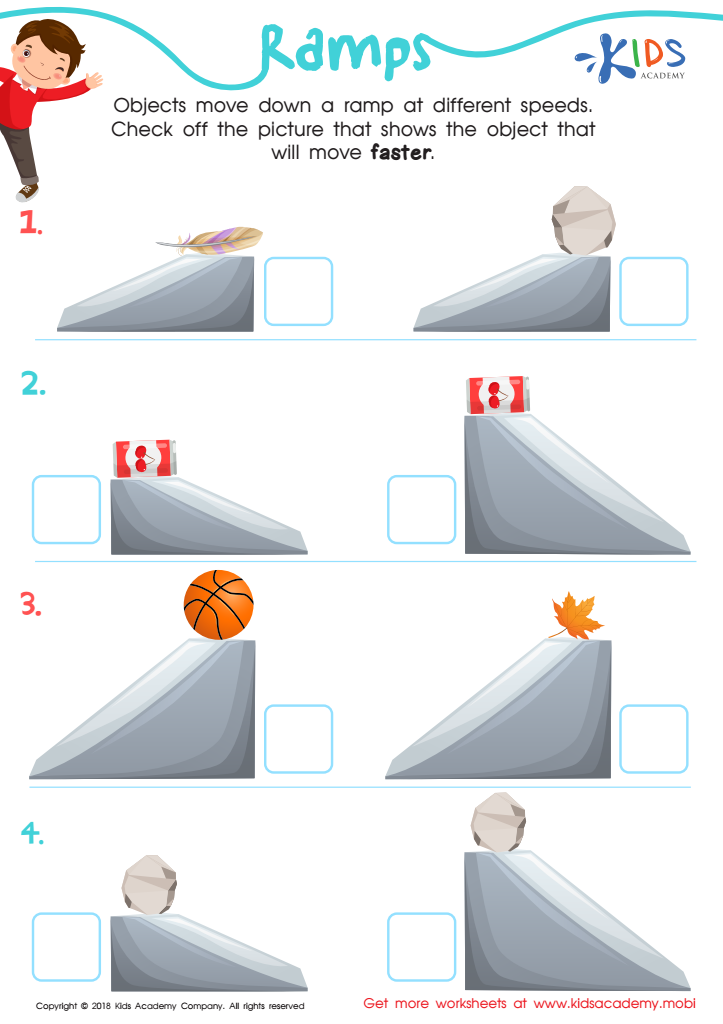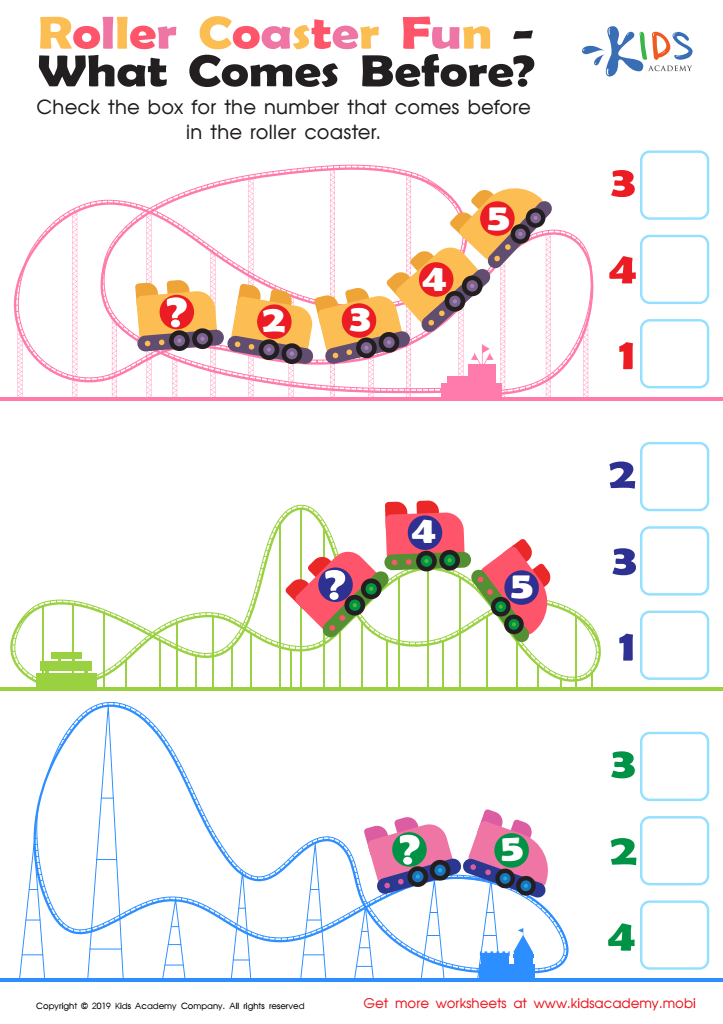Understanding gravity Worksheets for Ages 4-6
4 filtered results
-
From - To
Unlock the wonders of gravity with our engaging worksheets designed for children ages 4-6. At Kids Academy, we focus on making complex scientific concepts simple and fun. Our printable activities introduce young learners to the basic principles of gravity through a series of interactive exercises and colorful illustrations. These worksheets help children develop critical thinking and observational skills as they explore why objects fall, the force that keeps us on the ground, and more. Ideal for both classroom and at-home learning, our resources ensure a solid foundation for future scientific exploration. Discover the joy of learning about gravity today!


Ramps Worksheet


Roller Coaster Fun Worksheet


Down it Goes Worksheet


Race Car Ramp Worksheet
Understanding gravity is essential for young children aged 4-6 as it lays the foundation for exploring scientific concepts in a fun and engaging way. At this stage, kids are naturally curious about how the world works. Introducing the concept of gravity helps explain everyday observations, like why objects fall or how we stay on the ground, creating a clearer understanding of their environment.
For teachers and parents, focusing on gravity offers an opportunity to integrate learning seamlessly into play. Simple activities like dropping different objects and observing which fall faster can spark curiosity and analytical thinking. These early experiences with scientific inquiry promote problem-solving skills and a love for learning.
Moreover, understanding gravity can enhance safety awareness. By realizing why things fall, children can better understand how to prevent accidents, like why they should be careful around heavy objects or keep their toys off stairs.
Concepts like gravity also lay the groundwork for future education in physics and other STEM fields. By fostering an early appreciation for science, parents and teachers can inspire children to ask questions, seek answers, and build confidence in their ability to understand complex ideas. Thus, an early introduction to gravity sets the stage for a lifelong journey of exploration and learning.
 Assign to My Students
Assign to My Students
















